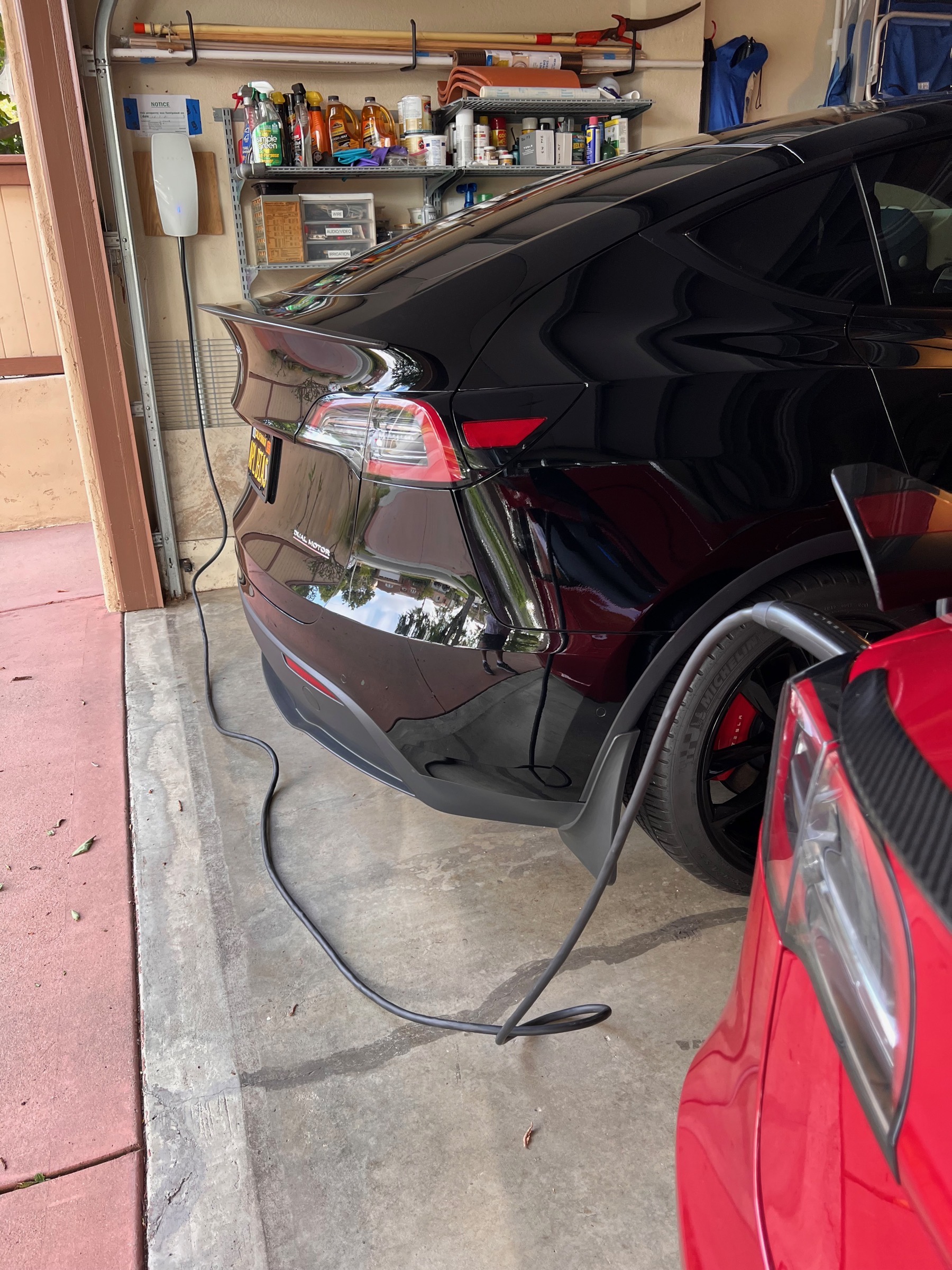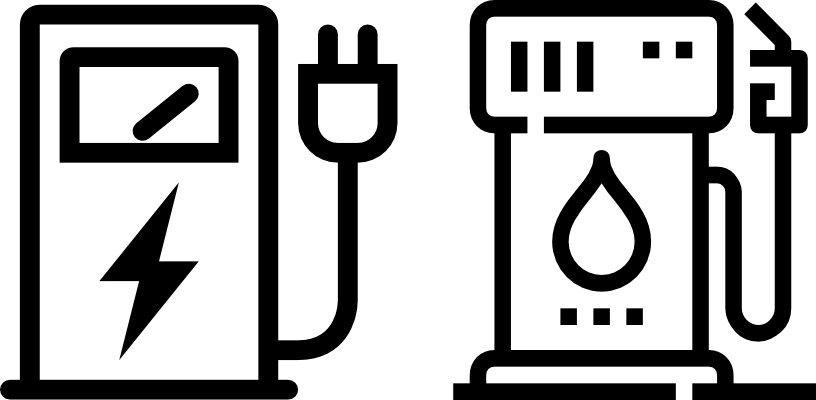
One of the questions electric vehicle drivers get asked the most often is, “How long does it take to charge?” I answered this question back in May of 2019 shortly after I first got my electric vehicle. As I explained, “it depends”. I went into great detail outlining all of the variables that go into answering that question.
I’ve changed my answer. The real answer is that it doesn’t take me hardly any time at all to charge my car. Let me explain.
First of all, every one of us is delusional about how long it takes to fill our cars with gas. I’ll throw Robb Dunewood under the bus as an example. On the recent SMR Podcast Episode F-150 where they talked about Chris’s new truck, Robb said, “It takes me about 3 minutes to fill the tank on my Escalade.” For Robb to fill a 28.3-gallon tank in 3 minutes, he must have a NASCAR pit crew using their pressurized fuel cans putting his gas in for him!
But Robb isn’t different from anyone else. Everyone I ask says it takes 5 minutes or less. If you think it only takes 5 minutes, then why are you so annoyed when you realize on the way to work that you forgot to fill up on the way home? In this day and age, you probably don’t stop at the gas station that’s on your way, you drive to the cheapest station and maybe even wait in line at Costco to get the cheapest gas!
Back to the question at hand. People asking this question are really thinking about how inconvenient it will be to charge on a road trip vs. just putting gas in a car.
This is the wrong question.
It’s the wrong question because they’re only thinking about road trips. They’re not taking into account the time it takes to charge an EV when you’re not on a road trip.
Let’s do a thought experiment with some squishy subjective numbers and then do some math.
While the time it takes gas to pour out of the pump and into your car is pretty small, if you’re on a long road trip, isn’t there anything else you need to do when you stop? I’m guessing you need a snack or a meal. Maybe you just go into a fast-food restaurant, grab a burger and some fries, and shovel it down, but this still takes time. Perhaps you need to relieve yourself from the giant Coke you got at the previous stop. There are things you do that take more than five minutes (or three minutes for Robb).
Maybe you are one of those crazy people who really do care so much about getting there quickly that you don’t stop and stretch your legs, and you time your children as they race to the bathroom, and, like an animal, you let them eat in your car. I don’t think you can pull that off in less than 15 minutes.
Steve and I on a recent road trip of only about 4 hours, stopped to have lunch. We packed sandwiches to be as efficient as possible. We ate our sandwiches, and then went to the bathroom, and in that length of time the car charged up more than enough to arrive at our destination with plenty of range left to drive around when we got there. In fact, it took us much longer to eat than the car needed to gain enough charge. That’s not a long drive, but the 30 minutes we took stopping to charge was more than enough to keep going. Since EVs charge much faster for the first 60-70% of the battery capacity, making a couple of short stops on a longer trip is much more efficient than just sitting there for an hour.
Let’s assume that twice a year we take a 6-hour road trip. In that 6 hours, the ICE (internal combustion engine) car would need to stop once to fill up. We’ll split the difference between the speed demons and normal people and assume the stop is 20 minutes, so 40 minutes total stopping for the round trip drive. We’re taking two trips a year so that’s 1 hour 20 minutes total for the year on road trips.
With an EV, I’d probably stop twice on that same 6-hour drive. I could probably get enough charge in two 20-minute stops, but let’s assume I’m delusional like everyone else and call it 30 minutes for each stop. That’s 120 minutes per trip or 240 minutes (4 hours) per year of stoppage time on road trips for the EV.
So far, the EV took 3 hours and 20 minutes longer for the two road trips.
But now let’s talk about the other 50 weeks of the year.
How often do you go to the gas station? Let’s assume you have a super-efficient car and you don’t drive very far to work and soccer practice, so you only need to fill up every week and a half. That’s 33 fill-ups in those 50 weeks. We already established that it takes around 15 minutes to fill your car (assuming you don’t drive to Costco.)
Those 15 minutes, 33 times per year work out to 495 minutes, or 8 hours and 15 minutes to fill up the gas car per year.
Now let’s see how long it takes me to charge my car when I’m not on a road trip. I pull into my garage and walk the width of Steve’s car to take the charging cable off the wall. I walk that same width back and press a button on the charger to open my charge cap. I shove in the charger, and as I walk past my driver’s side window I glance in to make sure it’s set to charge overnight. To be fair, I do have to reverse the process in the morning and unplug and hang the cable on the wall charger in the morning, including walking back the width of Steve’s car.
When I said, “Hardly any time at all” to charge my car, I meant it. It’s maybe a minute and a half total time spent and it’s only that long if I have trouble getting the cable looped in the right direction on the charger when I’m done. Assuming I need to “fill up” my EV the same 33 times per year as the ICE vehicle, then it takes me 49 minutes per year to charge my car when I’m not on a road trip.
For the 50 non-road trip weeks, the ICE vehicle takes 8 hours and 15 minutes, while the EV takes 49 minutes. This gives the EV an advantage of 7 hours and 26 minutes.
On the road trips, the EV took 3 hours and 20 minutes longer, which means in a full year including road trips, I spend 4 hours and 6 minutes less filling my car than an ICE vehicle.
Bottom Line
You could easily play with these numbers with different assumptions and likely flip the math in favor of the gas car. But you can see that the two are not very far apart because 95% of the time, you can just charge at home. If you can’t have a charger at home, then the math changes quite a bit. The good news is that fast chargers are popping up all over the place, at least in the US with the Electrify America system. You might be able to charge while you’re doing your regular shopping each week, making it pretty efficient.
Driving long distances definitely takes more time in an EV, and if you drive long distances super often charging will definitely make those trips take longer. Maybe it’s a good thing to take more stops when you drive long distances. Take a cat nap so you’re safer on the road. Stretch your legs; it’s good for you!
If you’re like most normal people and have the ability to have a charger at home, then over the course of a year, you’re probably actually saving time even with those extended times charging on long trips.


Your analysis is spot-on in my experience. I do, however, want to point out another issue caused by a lack of available charging that should be taken into account. We frequently travel from northwest Washington state to northeast Washington state. The normal trip is approximately 340 miles and 6 hours. This range REQUIRES a stop to recharge, but that is no big deal. Even with an ICE vehicle with 400 miles range, we would stop to “rest” and grocery shop. The problem arises with the route and our choices for stops. There are two primary routes to cross the state to get to NE Washington (a third main route crosses the center of the state). Our preferred route (because it is more direct for us) has no supercharging or even level 2 charging. The other route provides a supercharger in one location, but it is not near grocery shopping so on the way to our destination we have two stops (charging and shopping). I hope over time we will have more charging options, especially on our preferred route, but for now “time to charge” on a road trip also includes extra stops and/or longer routes.
Don’t most people fuel up their ICE car before taking a long trip? Why is this not counted against the time they take to make it to their destination?
Good point, Mark!